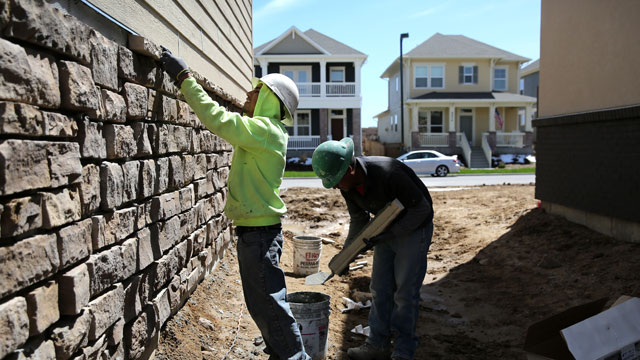
by Mary Anastasia O’Grady, WSJ
For years, more have been leaving the U.S. than arriving.
Donald Trump’s rants against Mexican migrants have helped rocket him to the top of national polls in the race for the Republican presidential nomination. What an inconvenient fact it must be that Mexicans are now leaving the U.S. in greater numbers than they are arriving.
Significant Mexican migration to the U.S. dates back at least to a Bracero program, launched in 1942, to match the supply of Mexican agricultural labor to U.S. demand during harvest time. The arrangement made it legal for Mexican workers to cross the border to work and return home at the end of the season.
The U.S. terminated the program in 1964 under pressure from organized labor. But Congress could not repeal the laws of economics. Opportunities for work and higher wages in the U.S. continued to be a draw, and Mexicans continued to migrate north. But as the risks of crossing the border increased, they tended to stay longer.
In a paper for the Migration Policy Institute, economist Francisco Alba found that the number of Mexican immigrants in the U.S. “doubled from 2.2 million in 1980 to 4.5 million in 1990 and more than doubled to 9.4 million in 2000.” By that time they constituted almost 30% of this country’s immigrant population. The Pew Research Center’s Ana González-Barrera estimated that seven years later the Mexican-born population (legal and illegal) in the U.S. was 12.8 million.
It wasn’t only Mexicans who came in big numbers to the U.S. in those years—by 2013 immigrants made up more than 13% of the U.S. population, according to a recent Pew Research Center report, up from 5.4% in 1960. But Mexicans, the largest group, had become a lightning rod for a nativist backlash as the U.S. economy sputtered.
One common charge is that migrants come to the U.S. to sponge off the welfare state. But the data are clear that work drives Mexican migration. Beginning in the late 1970s, an excess of labor in Mexico due to recurring monetary and economic crises, and a high birthrate, met a strong demand for labor in the U.S.
The U.S. construction and home-building boom in the 1990s and early 2000s is a notable phase. Without formal market mechanisms allowing bidders and suppliers to engage in legal transactions, underground networks matched employers to employees.
Pew’s Ana González-Barrera recently estimated that the number of illegal Mexicans in the U.S. shot up to 6.9 million in 2007 from 4.5 million in 2000. Then the Great Recession hit, the job market tanked, the labor flow ebbed and some one million Mexican migrants returned home between 2009 and 2014—more than the number of Mexicans coming here.
The result, says Ms. González-Barrera, is that “the net flow from Mexico to the U.S. is now negative, as return migration of Mexican nationals and their children is now higher than migration of Mexicans heading to the U.S.” She estimates that there were 140,000 fewer Mexicans living in the U.S. in 2014 compared with 2009.
According to a national household survey by the Mexican government in 2014, 25% of those who came since 2009 and left by 2014 said that they had not been able to find work in the U.S. A greater number (40%) said the main reason was to reunite with family. Among all Mexicans who returned during that period, 61% said it was either to reunite with family or start a family.
Yet the reasons Mexicans return home are likely more complex. As Mr. Alba writes, “Mexico’s improving economic stability, modest growth (in per capita terms), and ongoing social improvements” have also had an effect.
Border enforcement is a less convincing reason for the net outflow of Mexicans, since the immigration of Central Americans to the U.S. remains robust. Cato Institute immigration policy analyst Alex Nowrasteh believes that the liberalization of Mexico’s migration policy—at the behest of Republicans who complained that Mexico dealt harshly with its own migrants while demanding generosity from the U.S.—has made it easier for Central Americans to pass through Mexico and get to the U.S. border.
Mr. Trump may need a new bête noire. The Census Bureau reported in 2013 that immigration from China and India was higher than from Mexico. “The new prominence of Asian migration,” Muzaffar Chishti and Faye Hipsman of the Migration Policy Institute wrote in May, “may herald a significant and long-term transition in the demographics of future U.S. immigration.”
Mexicans are still the largest immigrant group. But if the trend continues, Mr. Trump won’t have so many of them to kick around anymore.



